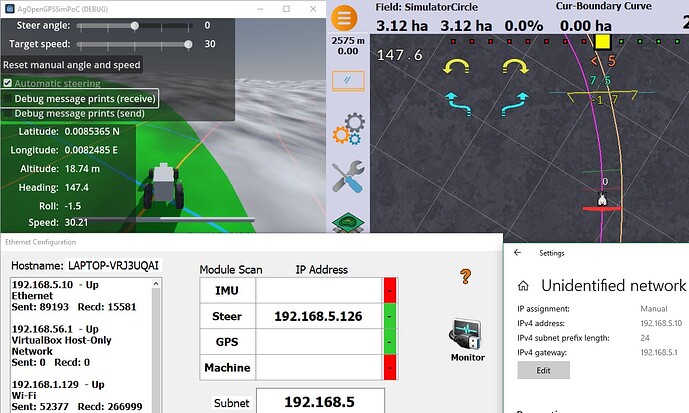Might be related: When testing an “external simulator” ( External simulator using a game engine (Godot) ) I noticed that you can actually get it working on the same computer as the AgIO/AOG is running. When using the default subnet 192.168.5 on the AgIO and IP 192.168.5.10 on the computer the simulator can actually communicate with the AgIO and everything seems to be working. Actually found this accidentally while testing if the simulator runs on the tablet AOG was running on. ![]() I expected this not to work as the IP was not .126, but use of broadcast messages as written in this thread kinda explains this.
I expected this not to work as the IP was not .126, but use of broadcast messages as written in this thread kinda explains this.
It is slightly confusing that the IP shown for the steer unit is 192.168.5.126, though, as it is also running on 192.168.5.10:
At least in this laptop you need to connect a cable to ethernet port to get this working. I have it connected to a router with subnet 192.168.1.x so likely it doesn’t really matter where you connect the other end to.
Message log from the external simulator:
AgOpenGPSSimLog_SameIP.txt (36.7 KB)
Based on this it looks like “hello” is sent only to the defined subnet and “whoami” to all subnets available(?)
